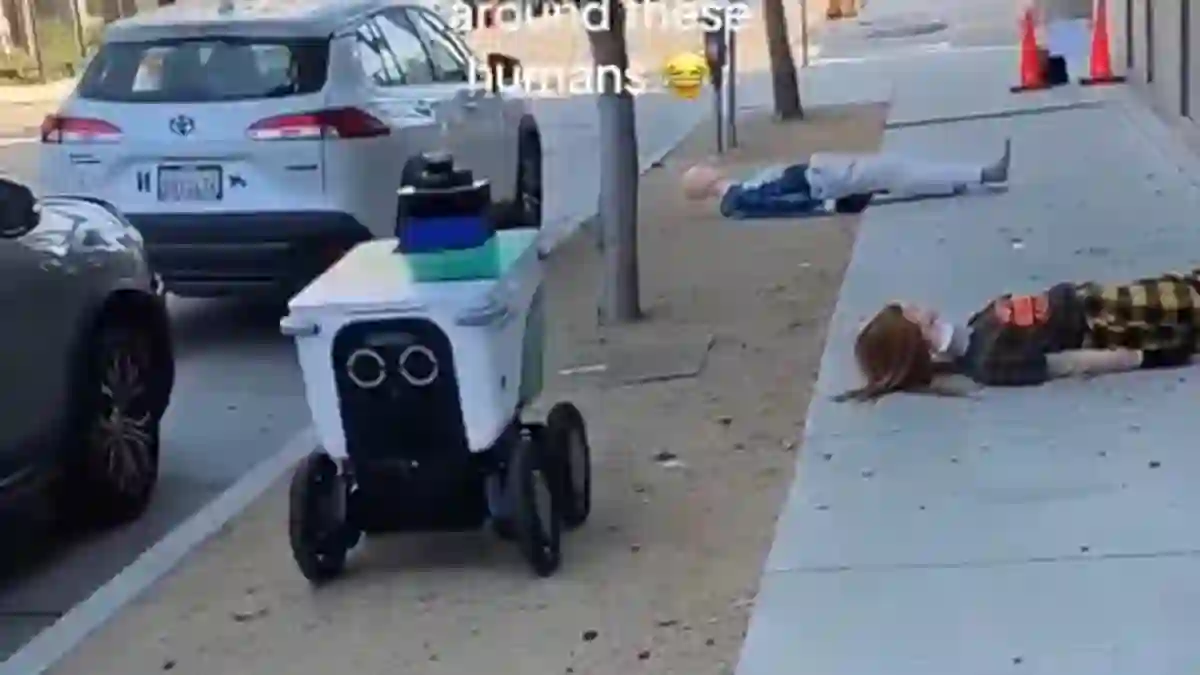You’d think something out of a dystopian sci-fi movie was unfolding in real life—but it’s just another day in Los Angeles, 2025.
In a city where homelessness has become part of the landscape, tech companies are now programming their delivery robots to weave around bodies lying on the sidewalk… even if those “bodies” are just mannequins for training.
Robots in the Wild—With Mannequins in Their Way
Serve Robotics, a company focused on autonomous food delivery, has been spotted testing its wheeled delivery bots on LA’s rough sidewalks.
But the eye-catching part? Engineers are placing dummies—mannequins dressed up to resemble homeless individuals—right in the robot’s path.
One stunned passerby recorded the scene and posted it online.
At first, he couldn’t believe what he was seeing… until it clicked.
“My mind went straight to—yeah, they better learn how to dodge all that,” he said.
“It’s more important to be safe and avoid lawsuits.”
Social Media Reacts: Welcome to the Future
Once the clip went viral on X (formerly Twitter), it didn’t take long for people to weigh in—and most of the reactions weren’t pretty.
Users took aim at California’s leadership, criticizing Governor Gavin Newsom and LA Mayor Karen Bass for letting things spiral to this point.
“Instead of fixing the homeless crisis, they’re teaching robots to go around it,” one user wrote.
“It’s like patching a leaky roof by redirecting the rain rather than fixing the hole.”
Another person joked: “Why do people watch dystopian movies? Just move to California.”
The Hard Numbers Behind California’s Homelessness Crisis
California has cemented its reputation as the country’s homelessness capital—and it’s not just perception.
A report from the Department of Housing and Urban Development (HUD) in 2024 found the state had more than 187,000 homeless people.
That’s 30,000 more than just five years prior.
To put it in perspective:
-
New York has about 158,000
-
Washington has over 31,000
-
Florida has around 31,000
Despite this, California has spent jaw-dropping sums on trying to fix the issue.
Between 2021 and 2022 alone, the state shelled out $7.2 billion—roughly $41,000 per unhoused person. Over five years, spending has topped $24 billion.
Training Tech to Work Around a Broken System
At this point, it seems like California’s high-tech innovators are more focused on designing workarounds than actual solutions.
And in a way, it makes sense—if robots are going to function in LA, they need to be prepared for what’s out there.
Including the reality that sidewalks are often blocked by people with nowhere else to go.
Still, it’s a harsh reminder of how tech, policy, and human struggle are colliding on the streets of one of America’s most iconic cities.



